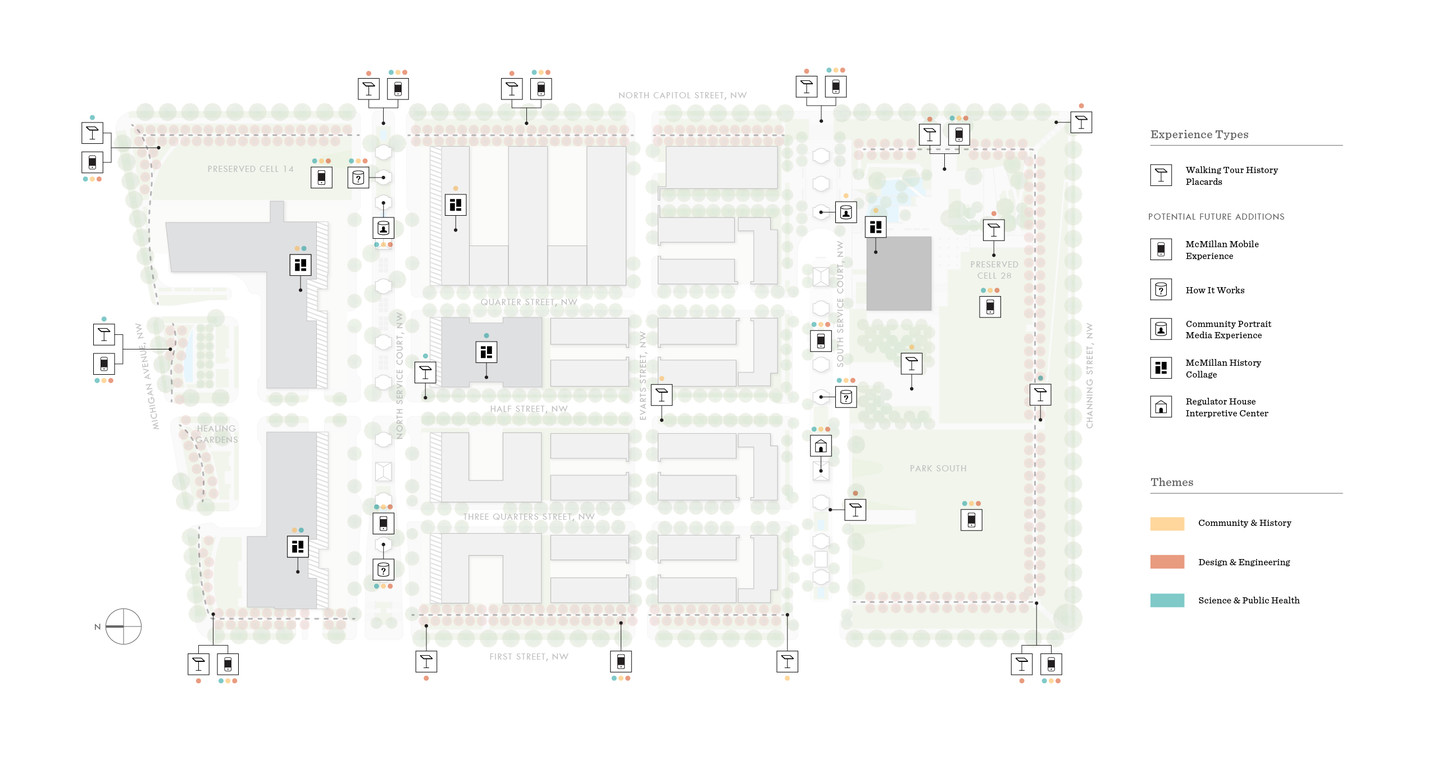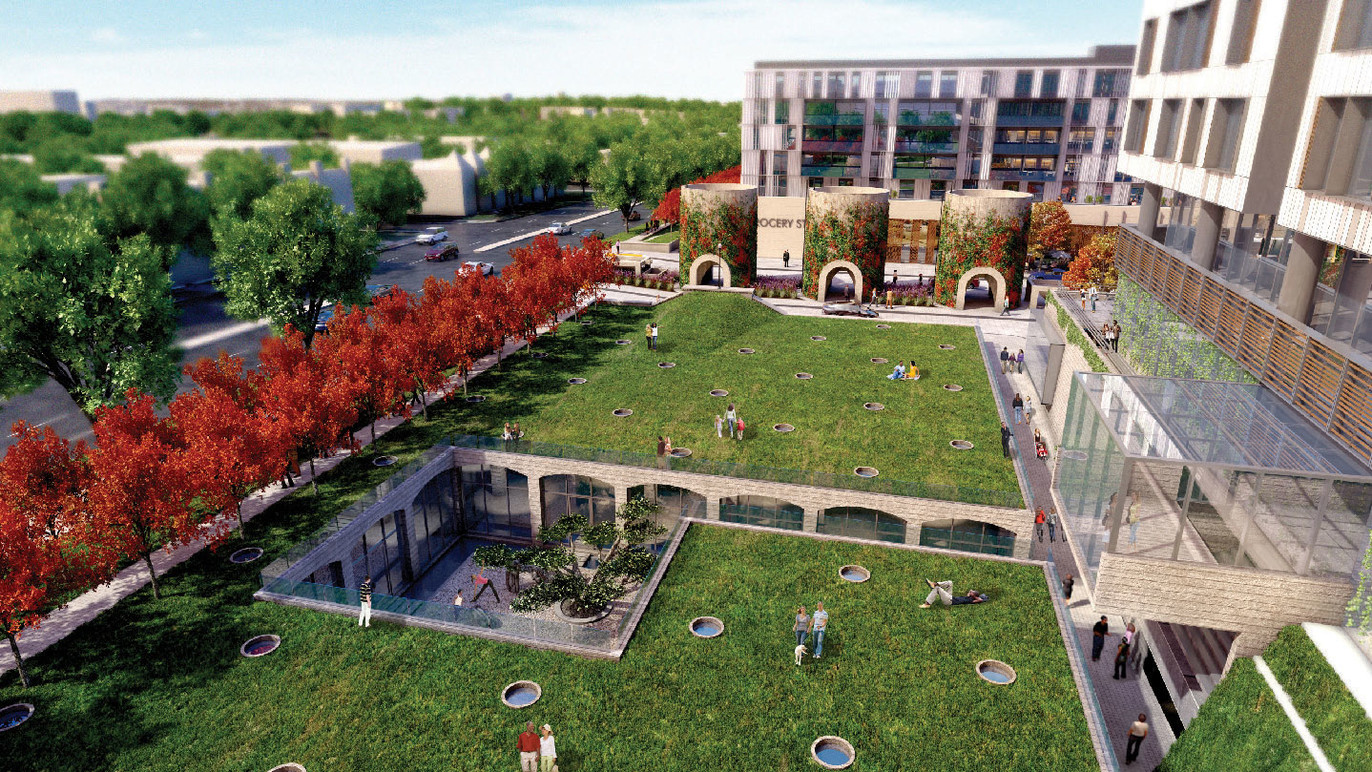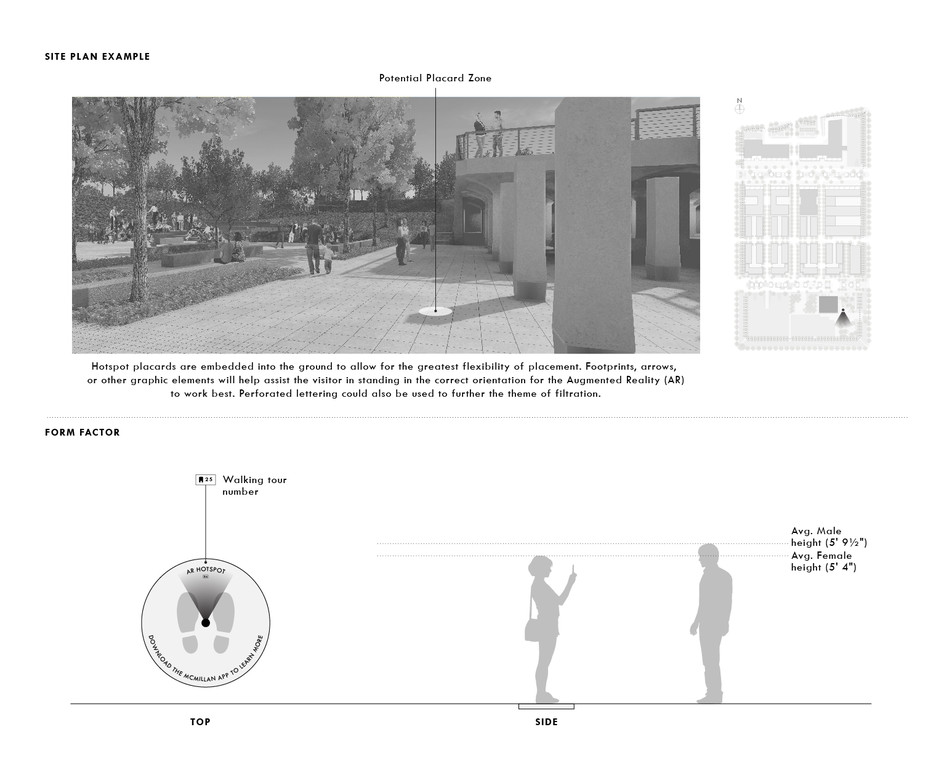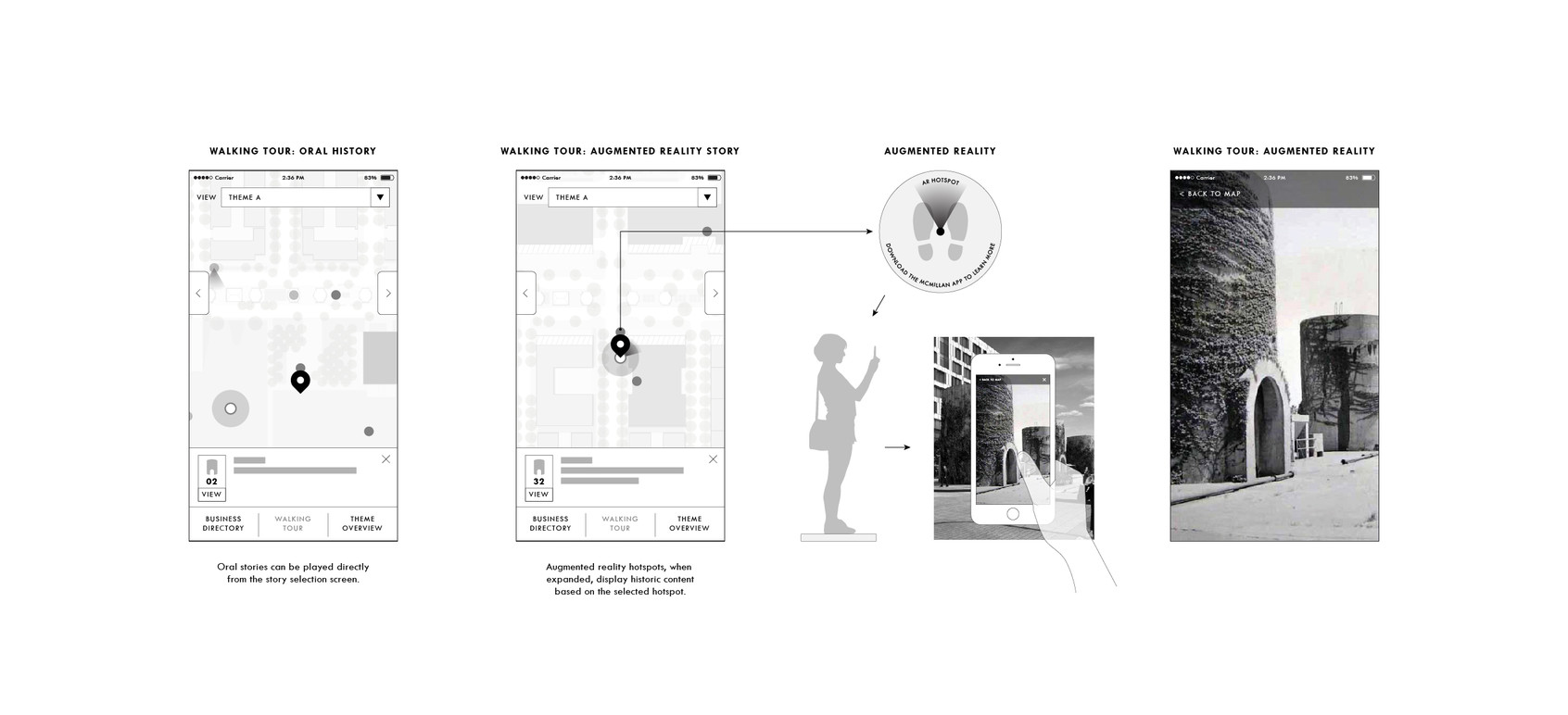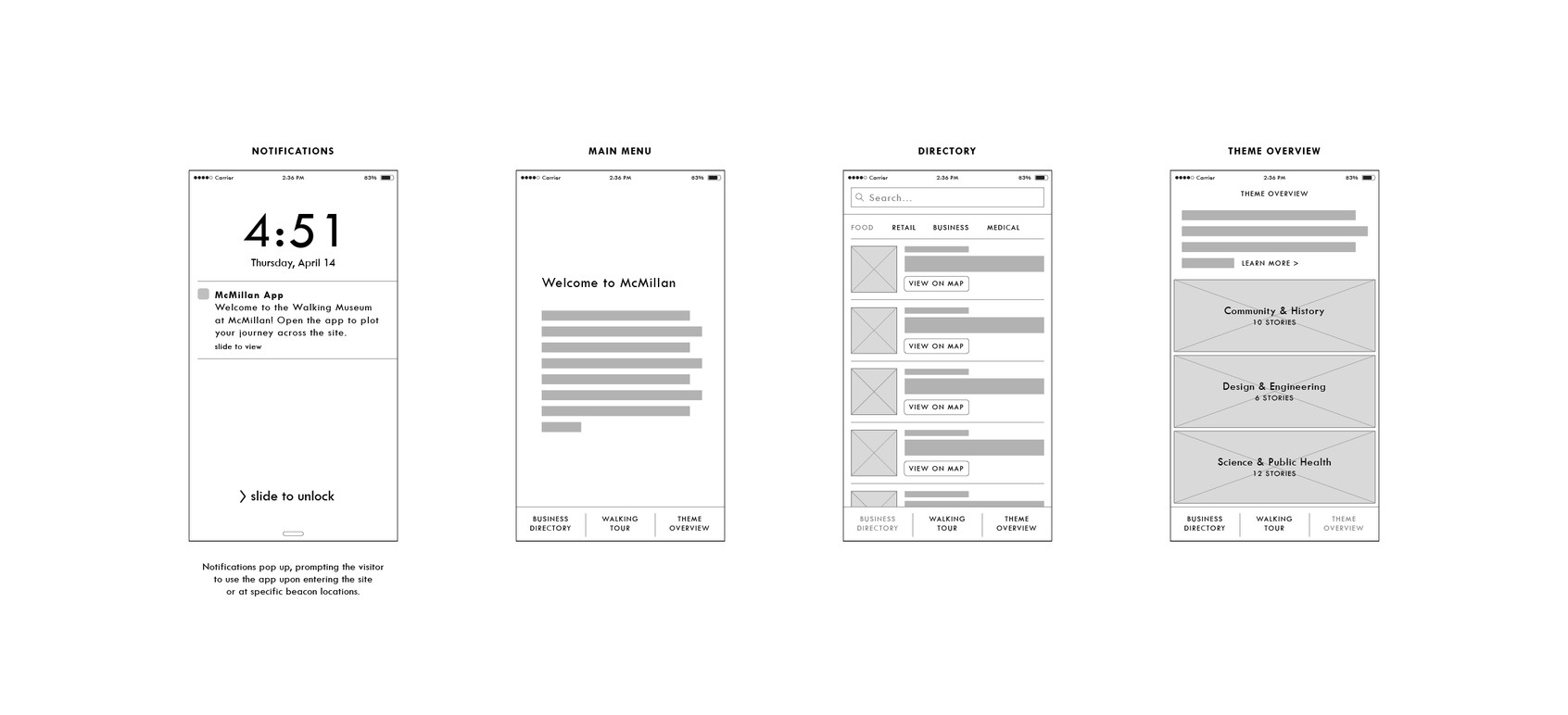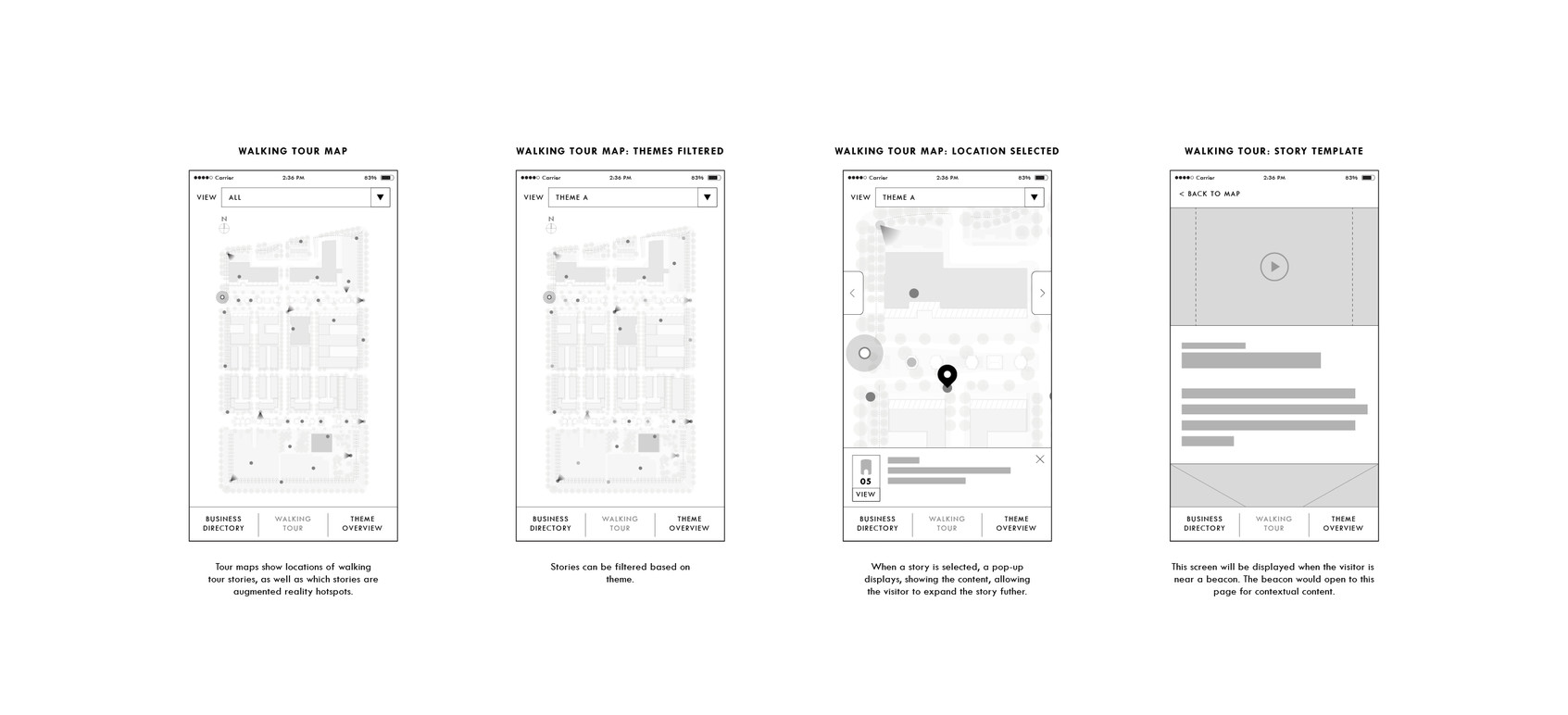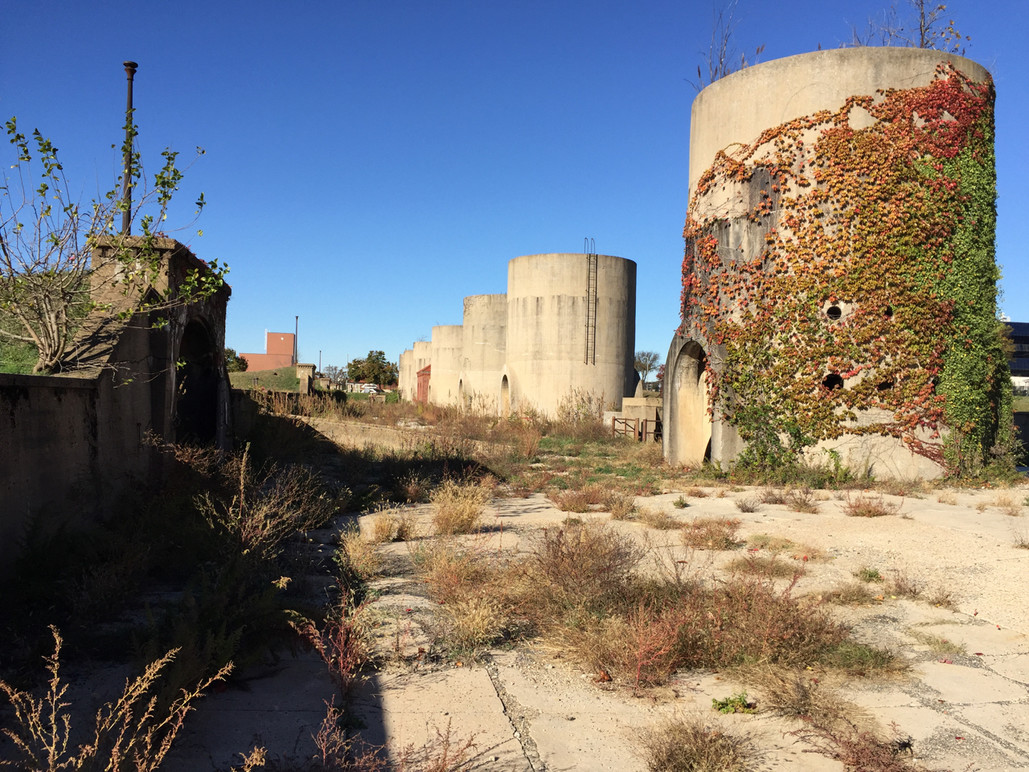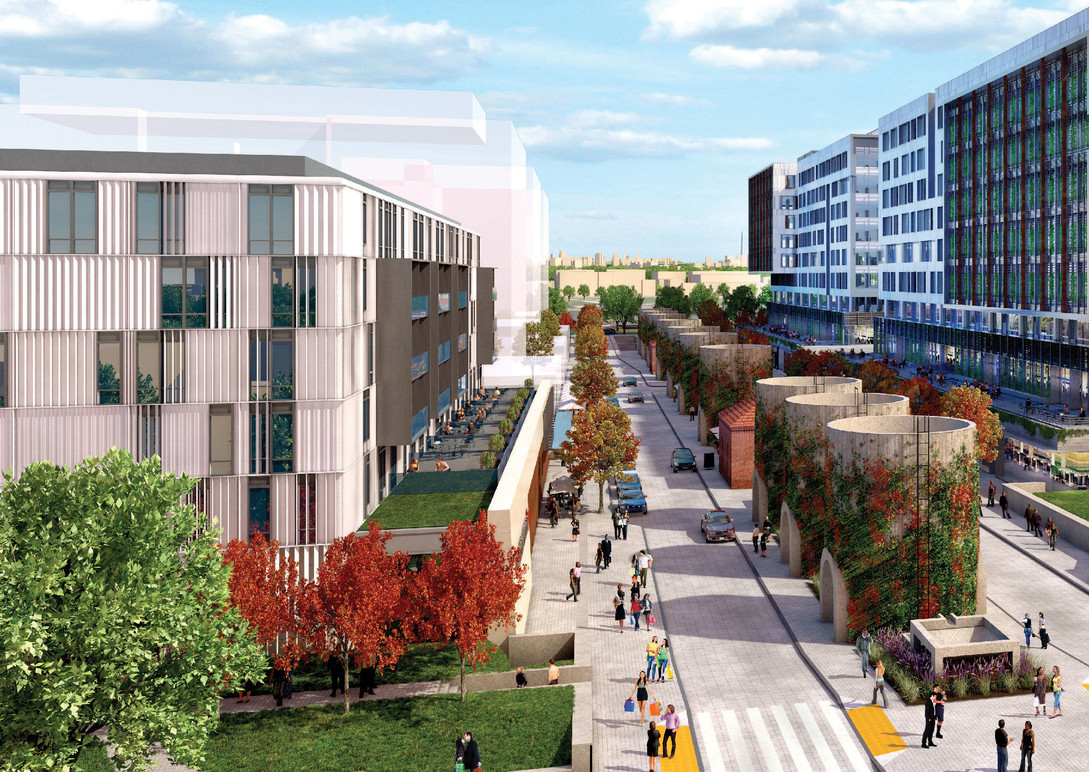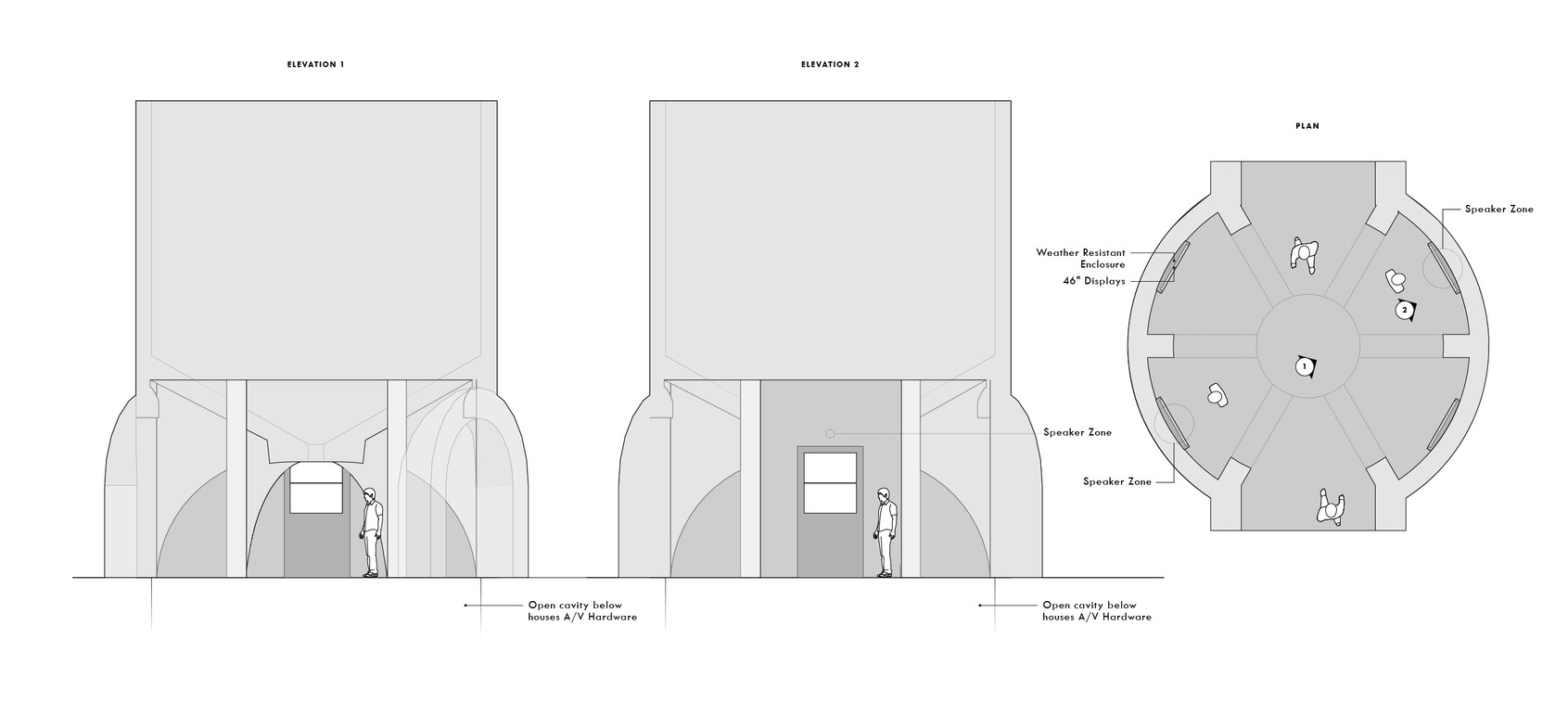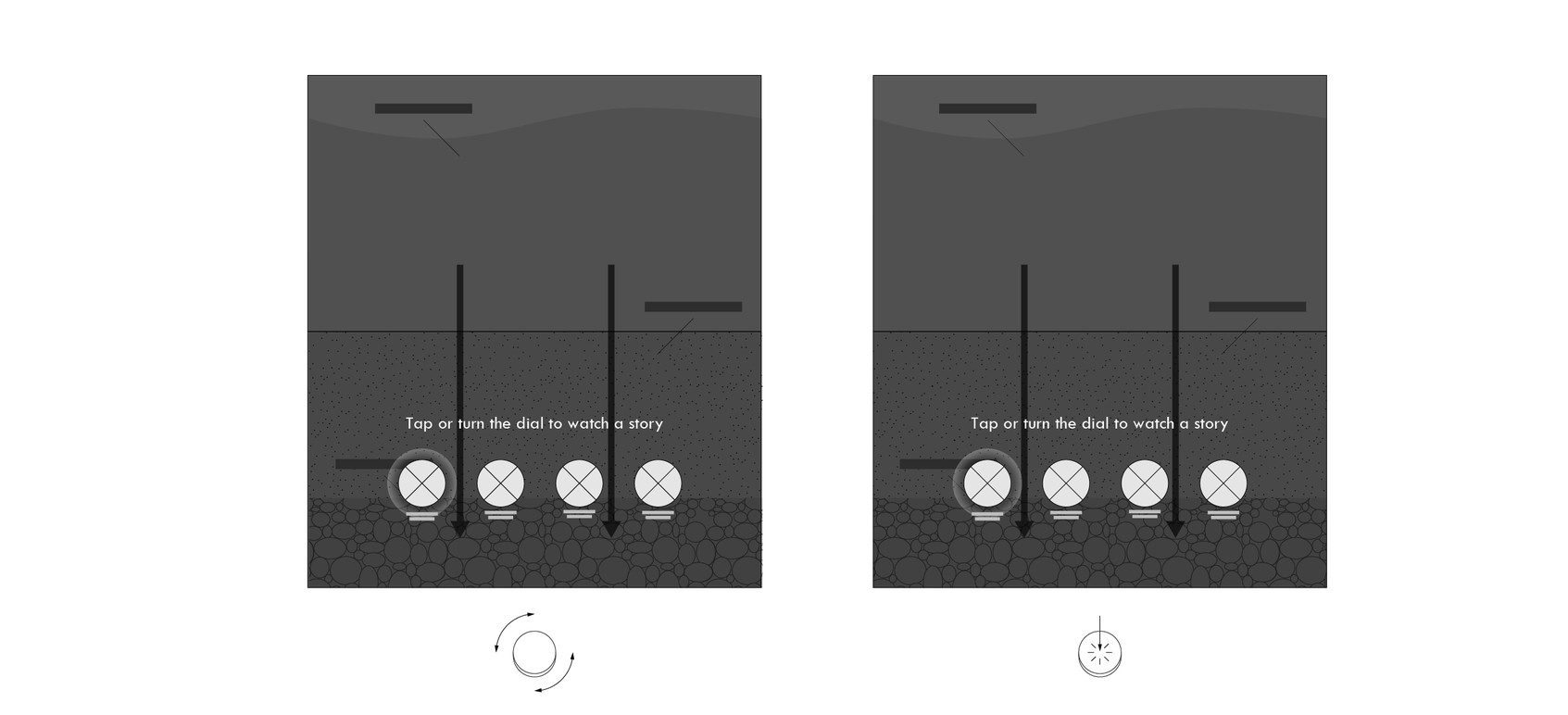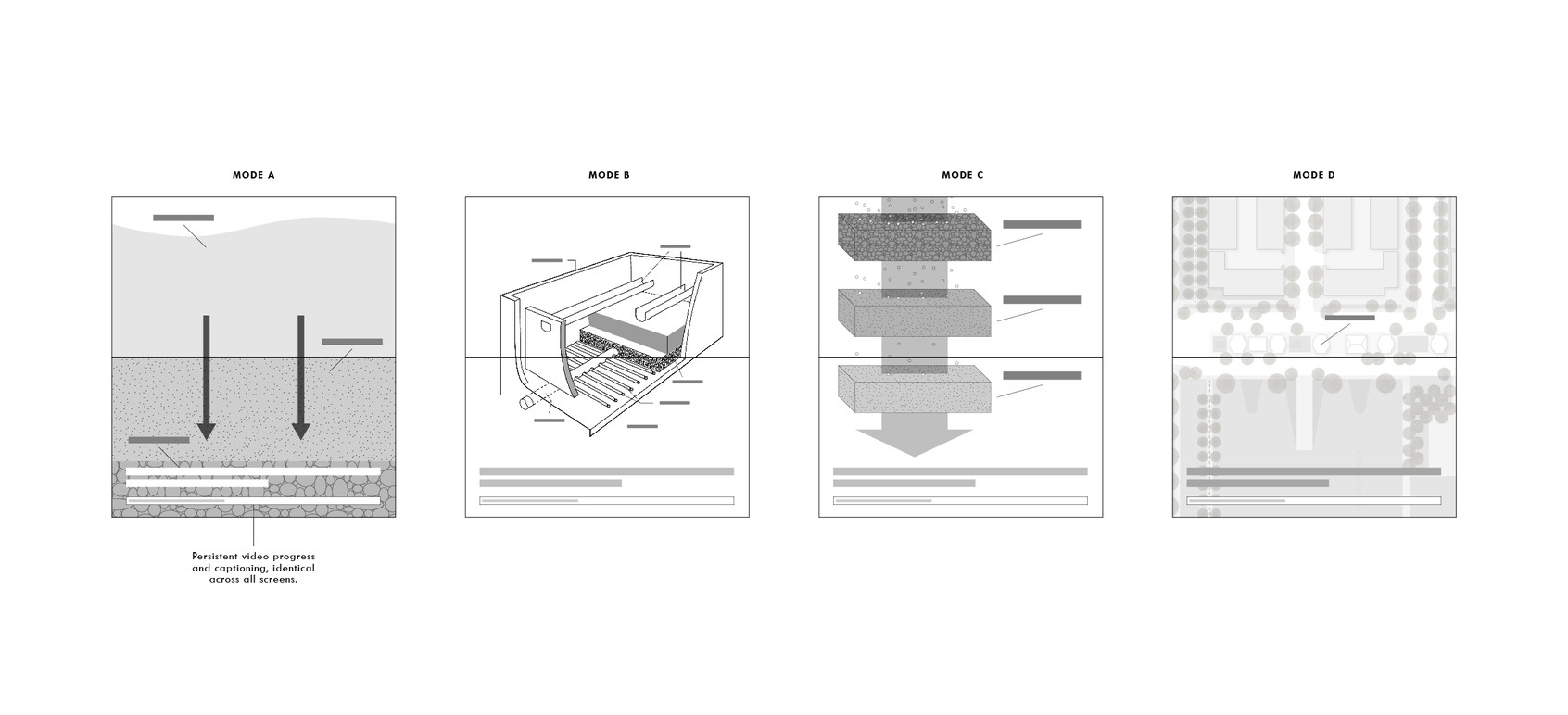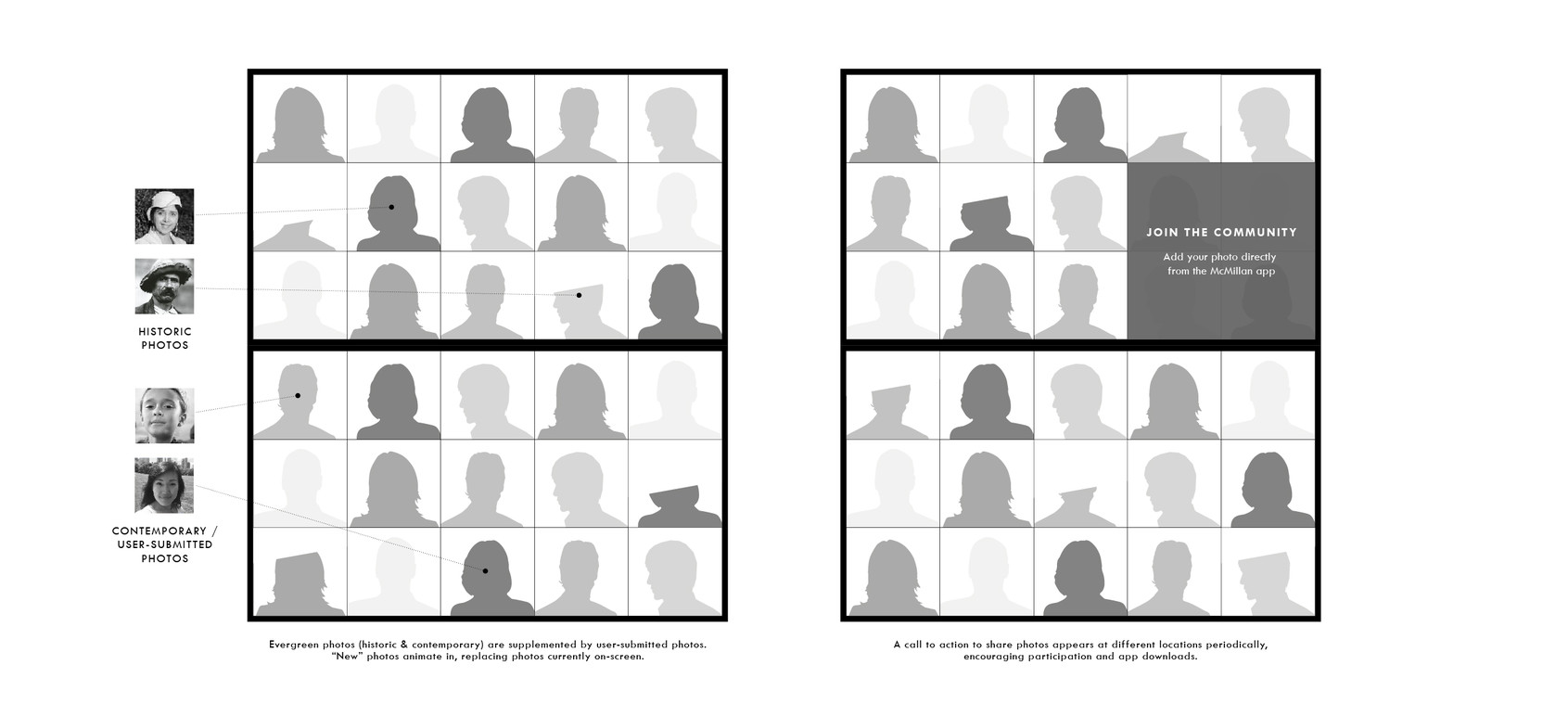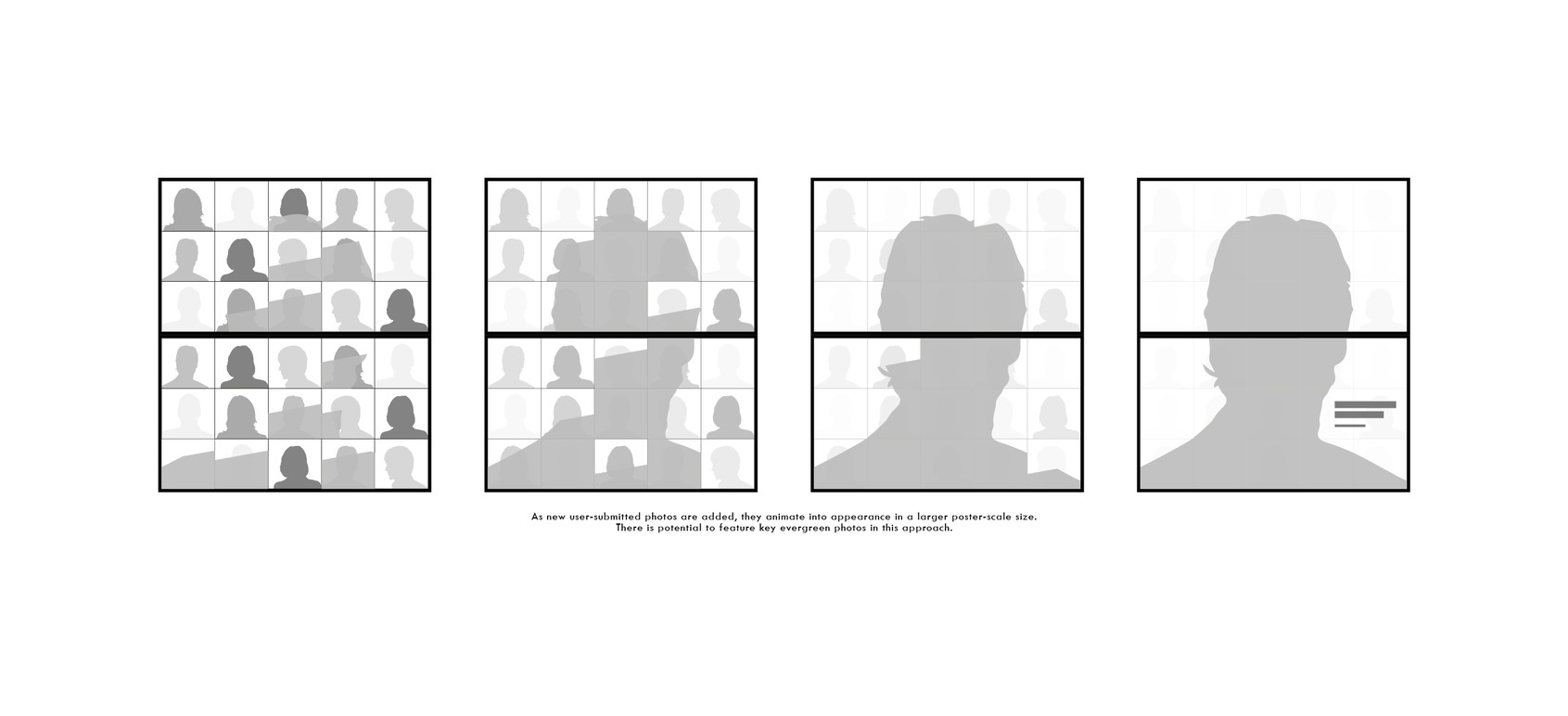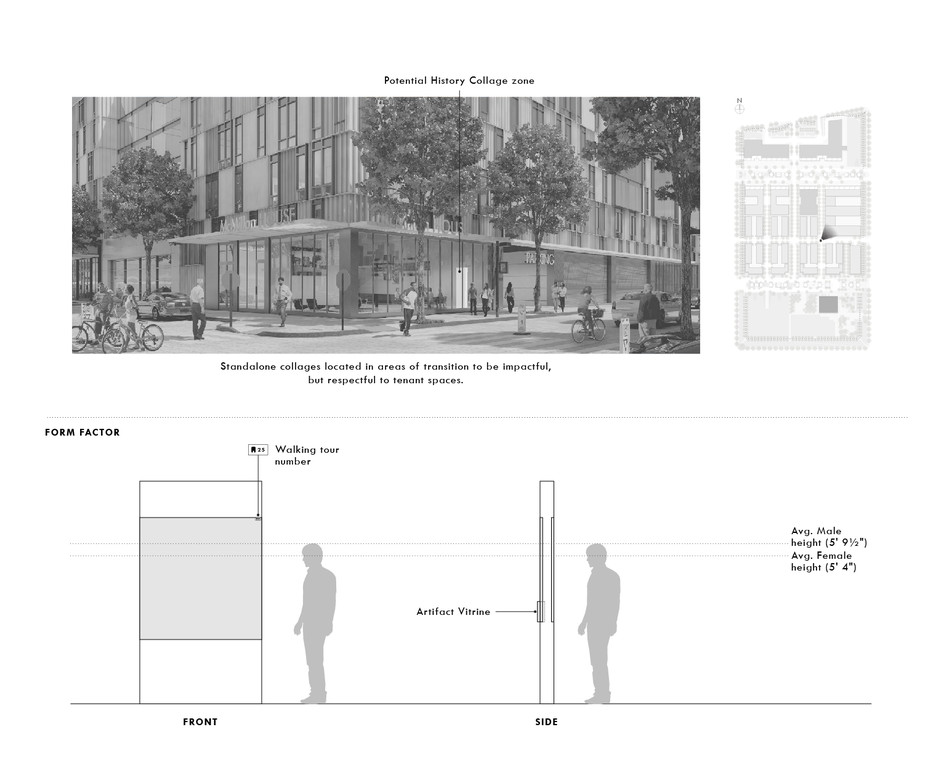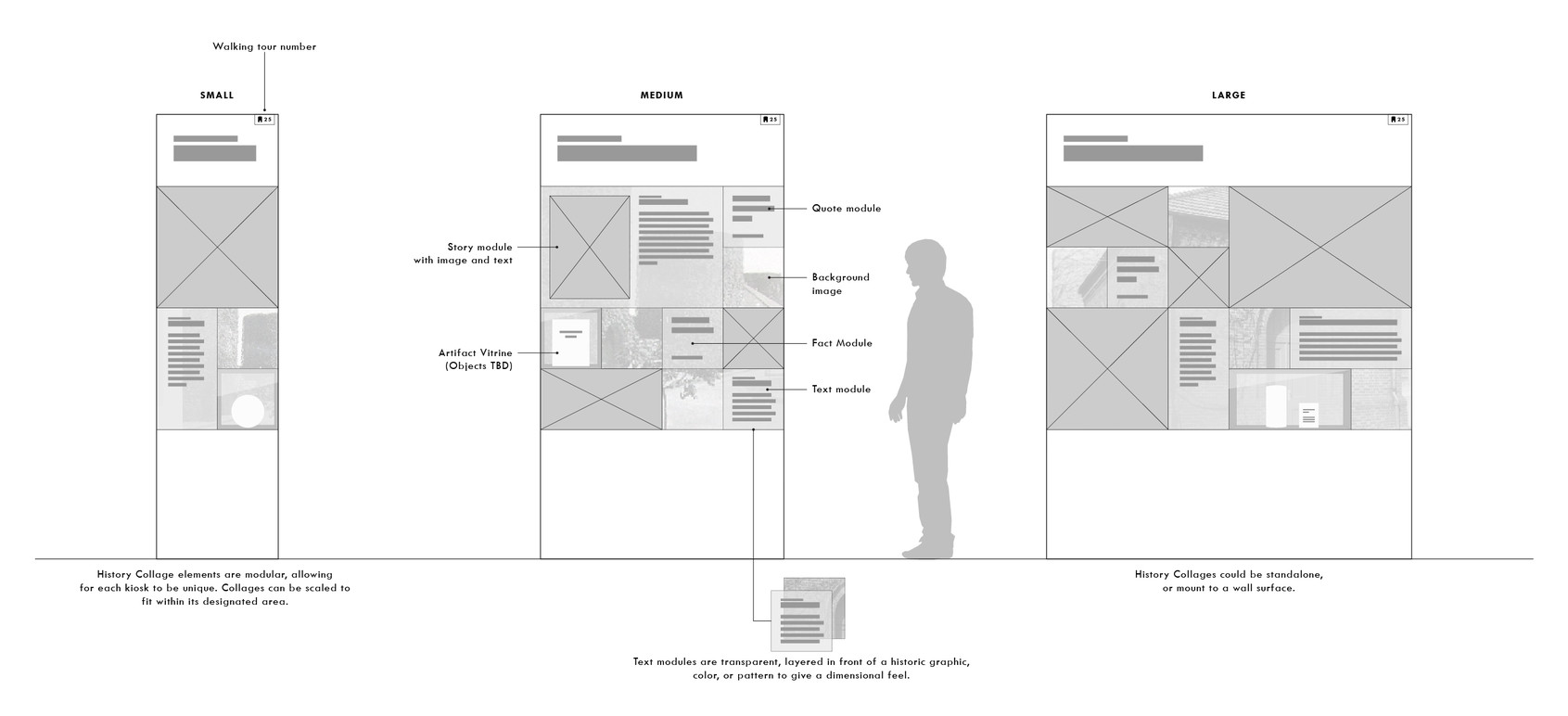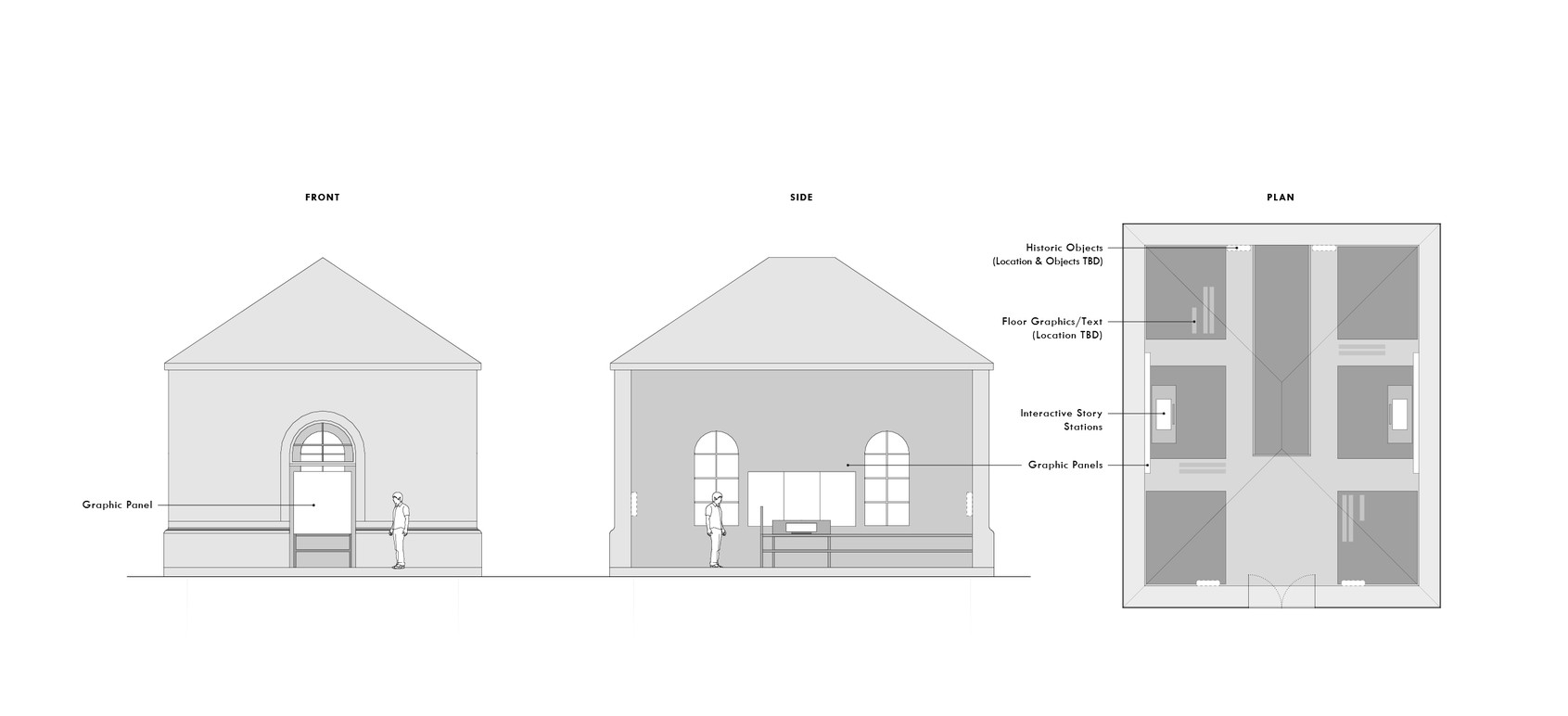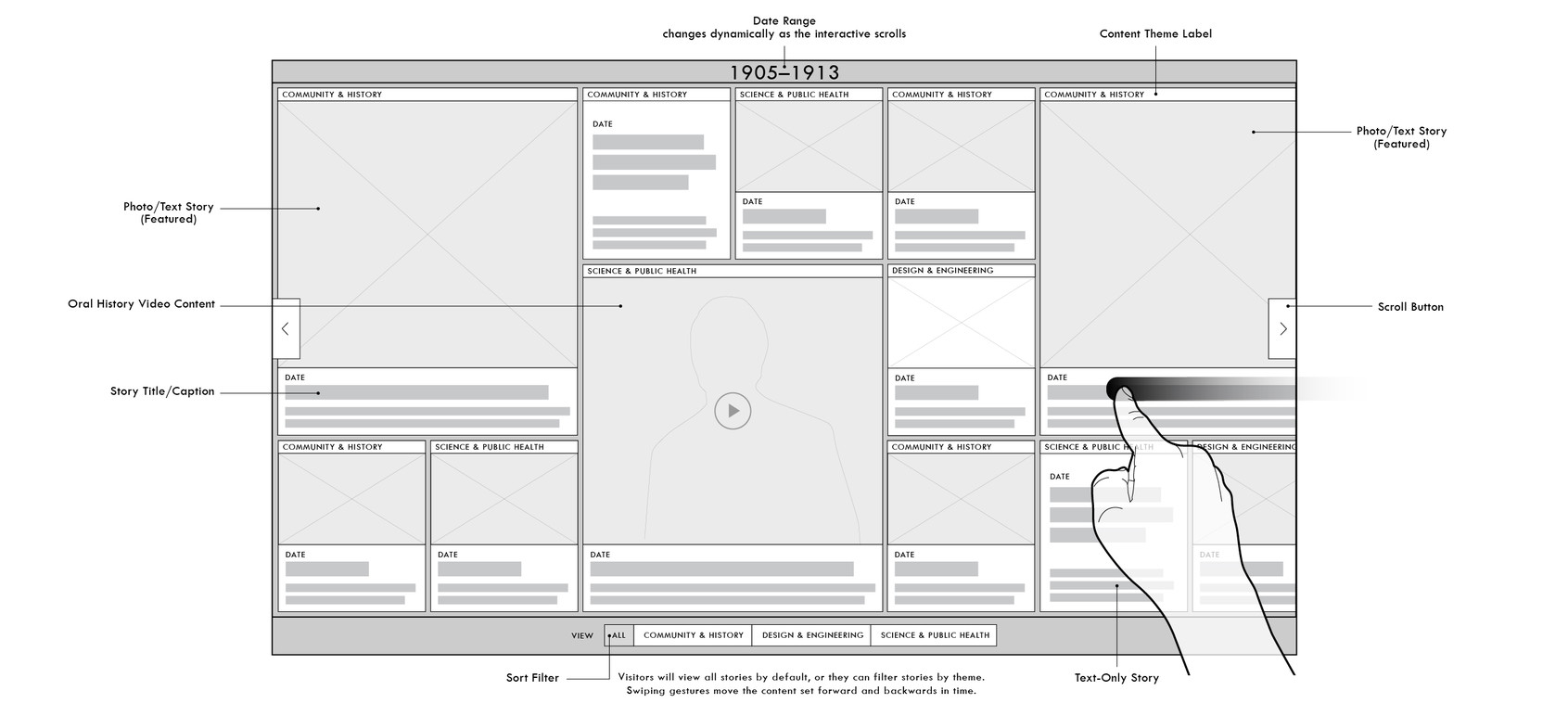Location-based Experience Design
McMillan Walking Museum Interpretive Experiences
Client:
Envision McMillan
Venue/Location:
McMillan Park, Washington, D.C.
Browse:
exhibits and interactives
Client:
Envision McMillan
Browse:
exhibits and interactives
Belle & Wissell led the conceptual and content development phases of the McMillan Walking Museum Interpretive Experience. Originally a sand filtration facility, which opened for operations in 1905, McMillan is under development as a mixed use space for the surrounding communities. In order to properly recognize its role in U.S. history, McMillan stakeholders asked Belle & Wissell to create an overarching experience—incorporating physical, digital, and mobile elements—to fully interpret the campus.
The site—a 25-acre expanse, dotted with sand silos and regulator houses—was constructed as part of the historic redesign of the D.C. water system. Slow sand filtration used no chemical treatments, and aided in the reduction of typhoid and other communicable diseases in the city. McMillan additionally featured a public park, with landscape architecture by Frederick Law Olmsted, Jr., to accommodate nearby residents seeking an escape from city life.
Belle & Wissell worked alongside historians, architects, and the city of Washington, D.C. in our development of a sweeping interpretive approach at McMillan. Initial content development was performed by Belle & Wissell, and identified three major themes to inform the experience: Community & History, Design & Engineering, and Science & Public Health. This initial research greatly informed the six distinct interpretive concepts that will be installed throughout the campus.
The McMillan Tour History Placards will come in a variety of form-factors (benches, sculpture, and Augmented Reality hotspots) to draw visitors’ attention to important areas of the site—whether they’re stopping by only for a short visit, or following the entire tour. An additional physical component, the McMillan History Collage, will be a modular, flexible system offering more robust interpretation at customizable kiosks. Various modules (featuring narrative and visual content, as well as encapsulated historic artifacts) will facilitate and deepen visitor exploration.
Physical interpretation of the site will be supplemented by layered, diverse digital experiences. The McMillan App will be a feature-rich repository for all things McMillan: a directory of businesses and services, a dynamic wayfinding tool (utilizing location-aware beacons), and tour guide (curated based on topic). The App will also be the visitor’s gateway to the Augmented Reality experience, through which they can see McMillan as it was in 1905. How It Works and the Community Portrait Media Experience transform the original structures throughout the campus into dynamic, inviting, and interactive spaces for modern-day visitors. Guests can learn about the science behind slow sand filtration, and explore past and present communities at McMillan—all while standing in the historic sand silos. Lastly, the Regulator House Interpretive Center will feature large-scale graphic panels, floor text, and two interactive story stations to interpret one of the hubs of activity during McMillan’s early history.
Belle & Wissell Team Credits
Principal: Gabe Kean
Studio Producer: Sarah Trueblood
Creative Director: Thomas Ryun
Technology Lead: Edward Tang
Senior Designers: Edrea Lita, Eric Harvey
Content Development Manager: Natalie Karbelnig
Belle & Wissell Team Credits
Principal: Gabe Kean
Studio Producer: Sarah Trueblood
Creative Director: Thomas Ryun
Technology Lead: Edward Tang
Senior Designers: Edrea Lita, Eric Harvey
Content Development Manager: Natalie Karbelnig
Belle & Wissell led the conceptual and content development phases of the McMillan Walking Museum Interpretive Experience. Originally a sand filtration facility, which opened for operations in 1905, McMillan is under development as a mixed use space for the surrounding communities. In order to properly recognize its role in U.S. history, McMillan stakeholders asked Belle & Wissell to create an overarching experience—incorporating physical, digital, and mobile elements—to fully interpret the campus.
The site—a 25-acre expanse, dotted with sand silos and regulator houses—was constructed as part of the historic redesign of the D.C. water system. Slow sand filtration used no chemical treatments, and aided in the reduction of typhoid and other communicable diseases in the city. McMillan additionally featured a public park, with landscape architecture by Frederick Law Olmsted, Jr., to accommodate nearby residents seeking an escape from city life.
Belle & Wissell worked alongside historians, architects, and the city of Washington, D.C. in our development of a sweeping interpretive approach at McMillan. Initial content development was performed by Belle & Wissell, and identified three major themes to inform the experience: Community & History, Design & Engineering, and Science & Public Health. This initial research greatly informed the six distinct interpretive concepts that will be installed throughout the campus.
The McMillan Tour History Placards will come in a variety of form-factors (benches, sculpture, and Augmented Reality hotspots) to draw visitors’ attention to important areas of the site—whether they’re stopping by only for a short visit, or following the entire tour. An additional physical component, the McMillan History Collage, will be a modular, flexible system offering more robust interpretation at customizable kiosks. Various modules (featuring narrative and visual content, as well as encapsulated historic artifacts) will facilitate and deepen visitor exploration.
Physical interpretation of the site will be supplemented by layered, diverse digital experiences. The McMillan App will be a feature-rich repository for all things McMillan: a directory of businesses and services, a dynamic wayfinding tool (utilizing location-aware beacons), and tour guide (curated based on topic). The App will also be the visitor’s gateway to the Augmented Reality experience, through which they can see McMillan as it was in 1905. How It Works and the Community Portrait Media Experience transform the original structures throughout the campus into dynamic, inviting, and interactive spaces for modern-day visitors. Guests can learn about the science behind slow sand filtration, and explore past and present communities at McMillan—all while standing in the historic sand silos. Lastly, the Regulator House Interpretive Center will feature large-scale graphic panels, floor text, and two interactive story stations to interpret one of the hubs of activity during McMillan’s early history.

